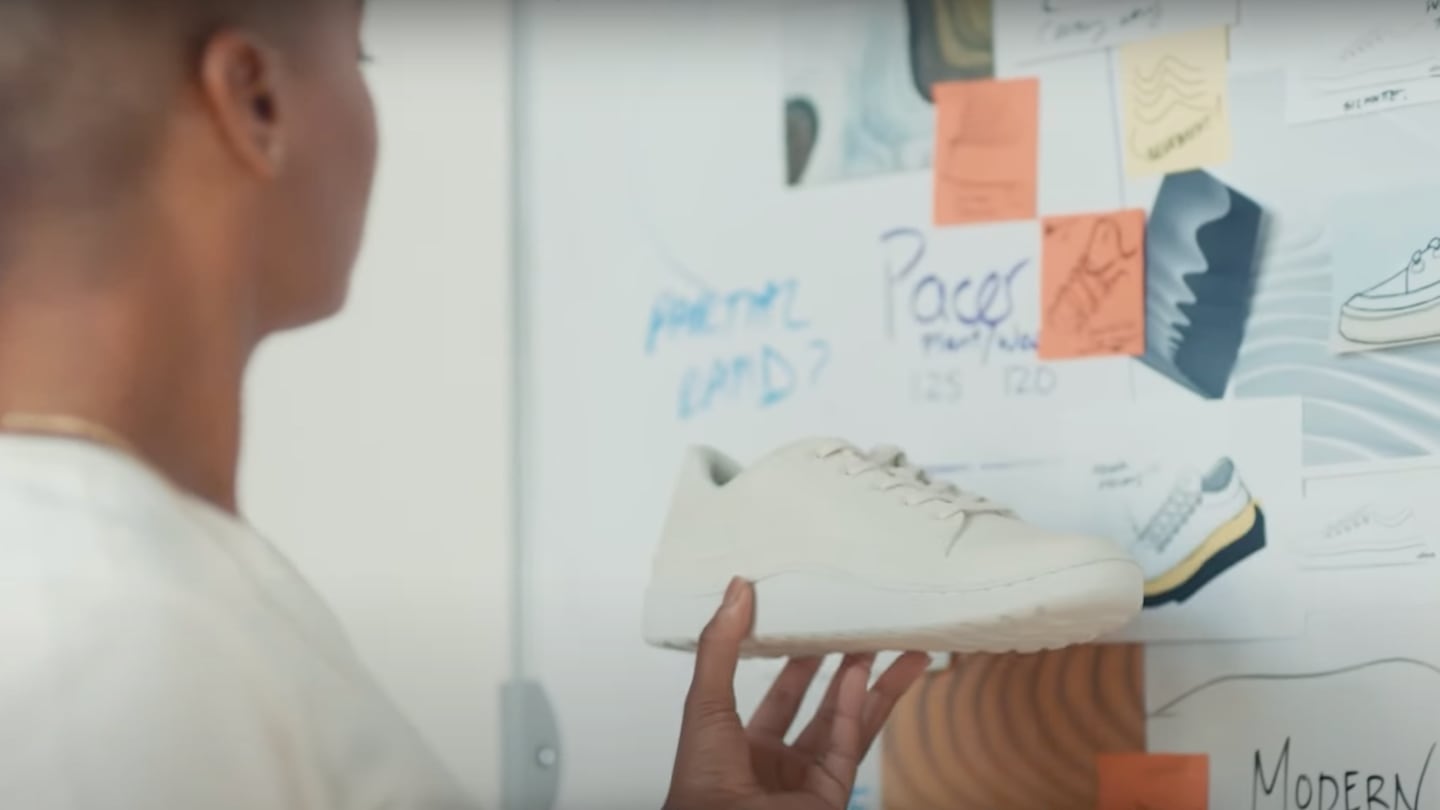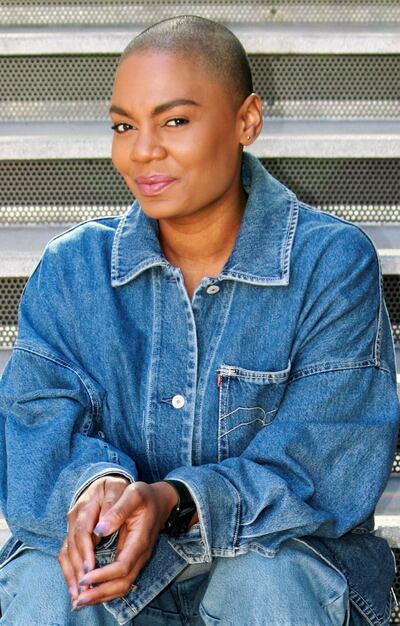
The Business of Fashion
Agenda-setting intelligence, analysis and advice for the global fashion community.

Agenda-setting intelligence, analysis and advice for the global fashion community.

The vice president of product design at Allbirds, Ashley Comeaux, studied industrial product design in Detroit at the College for Creative Studies before landing internships at Reebok, Converse and 4sight inc. Her first full time role was at Nike as a footwear designer, where she worked her way up to footwear design director over her 10 years at the company.
“Tenacity goes a long way. Going for what you want, believing in yourself and advocating for yourself [has] helped me along my journey,” she said in a LinkedIn Live broadcast last week. “Being my own cheerleader and sharing what I have to offer and how I can bring value every chance I got.”
In 2021, Comeaux joined Allbirds, the B Corp certified footwear and clothing brand, as senior footwear design and lifestyle director. Today, she is vice president of product design for the company.
Now, BoF Careers shares insights and actionable advice from last week’s event, Building a Career in Fashion with Ashley Comeaux.
ADVERTISEMENT

What drew you to build a career in fashion, specifically product design?
AC: My affinity for art and creativity ultimately was the catalyst for entering the fashion space, and bridging that passion with my innate ability to problem-solve — and my want to make things better landed me in product design.
Footwear entered my life early on in my high school trajectory, and [I wanted] to use footwear as a vehicle to problem-solve pain points, while packaging that in an expressive and aesthetic way.
Do you believe formal training is necessary to work in product design?
AC: I received my Bachelor of Fine Arts from the College for Creative Studies in Detroit, Michigan. A lot has changed over the last decade, with platforms like YouTube or TikTok, [as well as] learning platforms like Skillshare, lowering the barrier to entry for education in a highly technical space like product design.
So while there’s great value in formal training, relative to honing your craft in a competitive environment with other hungry individuals, I think the times have evolved [and] you don’t necessarily have to go down that route. Don’t get me wrong, I’m a proponent of education, but I think today there’s a more diversified way of becoming educated in a field like product design.
What advice would you give someone starting out in the industry?
AC: The work itself does a lot of the talking, so make sure that you’re really honing in on your skill sets. Then once you get through the door, it’s [about] being able to articulate what makes your work unique.
ADVERTISEMENT
Tenacity [also] goes a long way. Going for what you want, believing in yourself and advocating for yourself [has] helped me along my journey. Being my own cheerleader and sharing what I have to offer and how I can bring value every chance I got.
[...] If you’re coming from a different industry, understand what skill sets you have that are transferable. There are different things that you may learn in a different industry that can translate themselves into design — maybe you have graphic design skills that allow you to create beautiful compositions, [or how] you present certain ideas. [...] It’s a matter of taking what you do know and presenting your point of view in a different way.
What role or relevance do internships have today for upcoming designers?
AC: Internships are great to glean whether you want to remain in that industry or route. It’s lovely for understanding the way a business works or how a particular discipline functions within a process at any given company, [and] it’s a wonderful way to meet people and gain learnings from different experiences. So, there are lots of pros [in] internships.
The work itself does a lot of the talking, so make sure that you’re really honing in on your skill sets.
However, the landscape is different today — I have seen individuals land jobs off of social media, and so I think it’s more about finding all the ways you can hone your skills and gain experience, whether formal or informal.
What skills did you develop during your tenure at Nike that helped advance your career?
AC: I like to bucket it into people, products and processes.
In relation to people, the fashion industry is quite small and [so it’s important] to manage your reputation and have it precede you in a positive way. Your peers today can be your bosses tomorrow, so take care of your work, how you connect with others and make sure you’re creating a good set of advocates for you in your journey.
ADVERTISEMENT
Along the lines of product, it’s important to have vision and a unique perspective to really drive influence. Design is an 18-24 month process and so along the way a lot of various factors come into play that can dilute your vision. Your ability to influence, bring people [on board with] that vision and see it through to reality intact is a beautiful art and science.
Lastly, relative to process, as a designer, you are a very important piece of the process — but you are also just a piece of [it]. Being considerate of other functions that help you bring your vision to life is important.
How do you and members of your team upskill?
AC: By remaining a student. I’m vice president now and I still design alongside my team. It allows me to maintain a closeness to the product design and creation processes. I learn just as much from my team as I hope they learn from me. It’s about taking notes and absorbing different people’s processes to get an answer, seeking new inspiration and remaining curious.
How would you suggest aspiring designers integrate sustainability into their process?
AC: Getting outside of your primary focus of design is key to understanding the entire process involved to get your creation to market. It’s easy to stay in your lane, but understanding the downstream effects of the decisions that you make can impact the way you approach design.
Diligence around material choices and how they come together, diligence [over methods of] delivery of your designs — ocean shipping versus airfreight — getting in the nitty gritty can work towards making you a stronger designer and one that’s in service of the environment.
What soft skills are required in the work of a product designer?
AC: Being able to glean [consumer and market] insights. Asking the right questions to uncover those insights is key. In my team, we get together around market research and understanding what’s going on — not just around us, but in the world, to understand why a product needs to exist in the first place.
Having the ability to translate a brief into a design. A brief brings together the ask of a designer that’s comprised of what technology is [available], what problem you’re solving, what’s the market landscape, what is the inspiration you want to drive through the product and the basic understanding of materials — how materials take colour, the function of those materials and how they support the design that you have in mind.
Your peers today can be your bosses tomorrow, so take care of your work, how you connect with others.
Amidst that, navigating relationships with functions like development and product marketing, making sure everyone’s working together to [deliver the best product]. As a young designer coming out of school, you tend to have a close connection to your work, taking it personally if it’s critiqued.
Once you enter a corporate [role], the work you’re doing is in an effort to serve a customer who may not be you. That’s a very important skill to learn and build and be aware of early on in your career. Pick [your] battles.
What makes a candidate stand out to you today?
AC: A candidate who can articulate their design process and who brings a unique point of view to the table, one who has interesting points of reference and the ability to express their creative design solutions while weaving them into a brand’s design ethos. It’s one thing to have a signature as a designer, but the ability to take that signature and marry that with a design ethos is a unique skill set.
And then a candidate who’s a team player, who’s hungry and eager to learn and is coachable and curious. I appreciate a highly collaborative candidate who understands the value of bouncing ideas off of their team, truly building up their team as a result.
If you’re reaching out to someone, clearly state what you expect out of the interaction. If you’re seeking time, request [no more than] 15 minutes — anyone can give 15 minutes — and have pointed questions about what you’re looking to learn in that time.
[Taking the initiative] takes bravery and belief in yourself. The world of design can be highly competitive and so [your] unique perspective and [how] you present it is important. [Consider] what story you have to tell, and how you can bring value to a particular company.
Discover available design roles on BoF Careers:
Leather Goods and Accessories Designer (Work Placement), JW Anderson — London, United Kingdom
Senior Product Developer, Tommy Hilfiger — Amsterdam, Netherlands
Senior Accessories Design Director, Calvin Klein — New York, United States
Assistant Manager Product Development, Chico’s — Fort Myers, United States
Garment Technician, Aje — Sydney, Australia
Disclaimer: This interview has been edited and condensed for clarity.
To provide actionable insights and inspiration on how fashion and retail industries can further embed diversity, equity and inclusion in the workplace and business strategies today, BoF Careers co-hosted a panel discussion with The Outsiders Perspective. Now, BoF shares key learnings from the panel.
Discover the most exciting career opportunities now available on BoF Careers — including jobs from Tapestry, Alexander McQueen and Toteme.
A US regulator has banned most uses of the clauses, which started as a way for fashion companies to prevent senior executives from walking off with trade secrets, but have become a standard retention tool.
Check out this week’s new partners and openings on BoF Careers, the global marketplace for fashion talent.